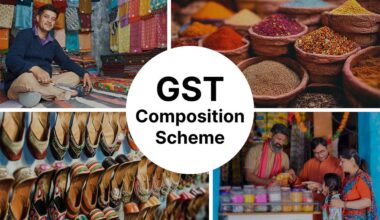GST (Goods and Services Tax) is an important indirect tax levied on the supply of goods and services in India. It has simplified the taxation system by replacing multiple indirect taxes with a single tax. If you are a business owner or a professional providing taxable goods or services, you may need to register for GST. This step-by-step guide will walk you through the process of GST registration, including the required documents, fees, and how to check the registration status.
Your Easy and Comprehensive Guide to GST Registration
Step 1: Determine Eligibility
Before proceeding with the registration process, it’s crucial to determine if you are eligible for GST registration. The following criteria determine the eligibility for GST registration:
1. Turnover limit: If your annual aggregate turnover exceeds the prescribed threshold, you are required to register for GST. The turnover threshold varies for different states.
2. Inter-state supply: If you are involved in the supply of goods or services across state boundaries, GST registration is mandatory, regardless of your turnover.
3. Specific businesses: Certain businesses, such as e-commerce operators, agents, and Input service distributors, are required to register for GST, irrespective of their turnover.
Step 2: Gather Required Documents
To initiate the GST registration process, you need to gather the necessary documents. The following are the commonly required documents for GST registration:
- PAN card: Permanent Account Number (PAN) card of the business or the applicant.
- Identity and address proof: Identity and address proof of the business owner or the authorized signatory.
- Business registration proof: Depending on the type of business, you may need to provide registration documents like the certificate of incorporation, partnership deed, or any other relevant registration proof.
- Address proof for place of business: Documents such as electricity bill, rent agreement, or property ownership proof to establish the address of your business.
- Bank account details: Scanned copy of the first page of the passbook or a canceled cheque displaying the applicant’s name, bank account number, and branch details.
Step 3: Online Registration Process
The GST registration process is primarily conducted online through the GST portal. Follow these steps to register for GST:
- Visit the GST portal: Go to the official GST portal (https://www.gst.gov.in/) and click on the “Services” tab. Select “Registration” and then choose “New Registration.”
- Fill the application: Fill in the necessary details such as PAN, mobile number, email address, and state in which you are applying for registration. An OTP (One-Time Password) will be sent to the provided mobile number and email for verification.
- Application reference number (ARN): After submitting the application, you will receive an Application Reference Number (ARN) on your registered mobile number and email address. Use this ARN for future reference and tracking of your application.
- Verification and documentation: The GST officer will verify the details provided and may request additional documents or information. Make sure to respond promptly with the required documents to avoid any delays.
- GSTIN and certificate: Upon successful verification, you will receive a GST Identification Number (GSTIN) and a GST registration certificate. The GSTIN is a unique 15-digit identification number for your business.
Step 4: GST Registration Application Status
After completing the registration process, you may want to check the status of your GST registration. Follow these steps to verify your GST registration status:
- Visit the GST portal: Go to the official GST portal and navigate to the “Services” tab.
- Select “Track Application Status”: Look for the option to track the application status or a similar option.
- Enter ARN or TRN: Enter your Application Reference Number (ARN) or Temporary Reference Number (TRN) received during the registration process.
- Click on “Search”: Click the “Search” or “Track” button to retrieve the status of your GST registration application.
- Check the status: The portal will display the current status of your application, whether it is pending, approved, or rejected. You can also view any additional comments or requirements from the GST officer.
Step 5: Download GST Certificate
Once your GST registration is approved, you can download the GST certificate from the GST portal. Follow these steps to download your GST certificate:
- Visit the GST portal: Go to the GST portal and log in to your account using your credentials.
- Access dashboard: Once logged in, access your dashboard or the “Services” tab on the GST portal.
- Click on “Downloads”: Look for the “Downloads” section or a similar option on the portal.
- Select “Certificates”: In the downloads section, choose the option for “Certificates” or “GST Certificate.”
- Download the certificate: Click on the “Download” button next to the GST certificate option. The certificate will be downloaded to your device in PDF format.
Also Read: Types of GST in India: CGST, SGST and IGST
Conclusion
GST registration is a crucial step for businesses and professionals involved in the supply of goods and services. This step-by-step guide has provided comprehensive information on the GST registration process, required documents, and how to download the GST certificate. Remember to check the eligibility criteria, gather the necessary documents, and complete the online registration process through the official GST portal. By following these steps, you can ensure compliance with GST regulations and smoothly obtain your GST registration certificate.







